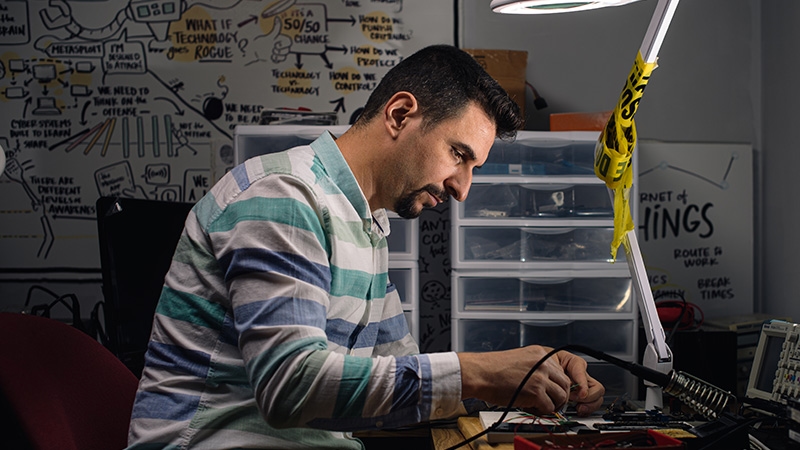
Carry a smartphone and laptop? Wear a smart watch? Walk past security cameras on streets and built into doorbells? Each device has the potential to provide data that law enforcement might use to solve a crime.
Umit Karabiyik, assistant professor of computer and information technology, is researching ways for people to share data with law enforcement while still preserving their security and privacy.
“Think about the data on every device,” Karabiyik said. “Individuals leave ‘fingerprints’ digitally on their phones with their behaviors. Sometimes they are unique, and the data created by individuals on different devices help identify who the person is that was using the device.”
The quantity of such data has grown exponentially in recent years. And when mass incidents with multiple victims occur, the quantity of data can be too much for law enforcement to handle.
“Today, it could be 500 terabytes in an incident with thousands of people using smart phones, security cameras in the areas,” said Karabiyik. “It’s like trying to find a needle in a needle stack rather than a hay stack. Which needles are you interested in? Which one specific item is the piece of data you need?”
Karabiyik and his research colleagues are working on ways to limit the amount of data that is shared. A person cooperating by sharing data might be able to choose to share only two or three photos from a phone rather than all of them, for example.
“I believe there has to be a balance between national security and personal privacy,” Karabiyik said. “This helps establish a trust between the public and the law enforcement agency so the public can share their data in a secured-manner situation.”
See the full Purdue News article by Brian Huchel.
Additional information
- Device information can be too much of a good thing for law enforcement investigation (Purdue News)
- Purdue Polytechnic’s Holistic Safety and Security research projects receive national attention, funding
- FileTSAR cyber toolkit helps detectives solve digital crimes
- CIT faculty aim to make big data a small issue for law enforcement
